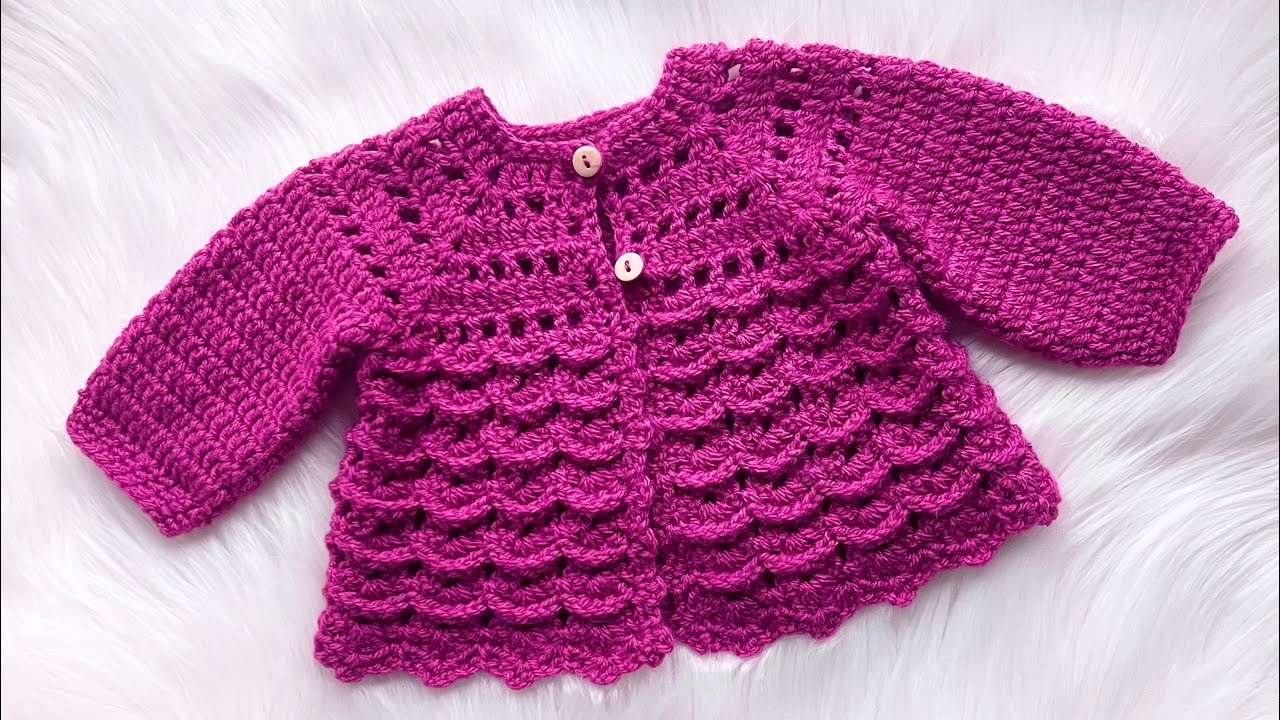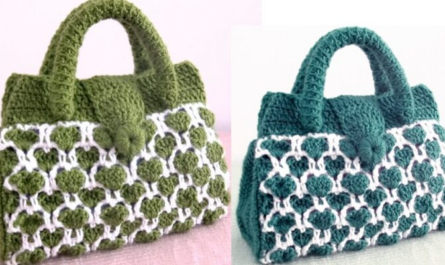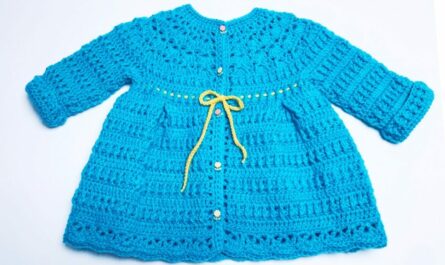A handmade crochet cardigan is a timeless and cozy gift for a special baby, and when you add the rich texture of the raspberry stitch, it becomes truly unique. The raspberry stitch, with its beautiful, plump texture, creates a three-dimensional effect that is both visually stunning and wonderfully tactile. It’s a fantastic stitch for a baby cardigan, coat, or jacket as it provides a dense, warm fabric perfect for little ones.
This detailed article will guide you through the process of crocheting a beautiful raspberry baby cardigan. This project is surprisingly simple, as the repetitive nature of the stitch makes it easy to follow and the pattern is very beginner-friendly.
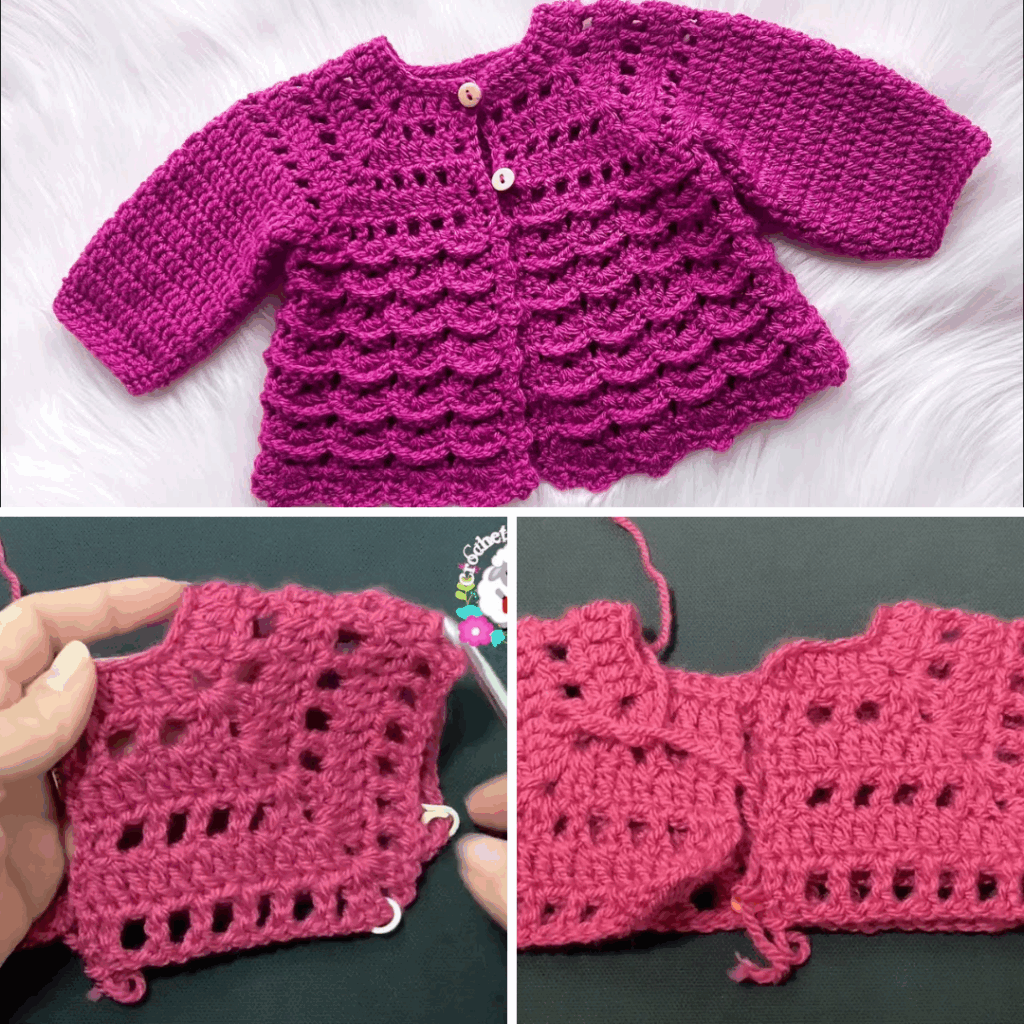
1. Why the Raspberry Stitch is Perfect for a Baby Cardigan
The raspberry stitch, sometimes called the 3D shell stitch, is an ideal choice for this project for several reasons:
- Rich Texture: The stitch creates a lovely, raised surface that looks like plump raspberries or little bobbles. This texture is not only beautiful but also provides extra warmth.
- Easy to Master: Despite its complex appearance, the raspberry stitch is a simple combination of single crochet (SC), double crochet (DC), and a few stitches worked together. It’s an excellent way for beginners to create a high-end look without advanced techniques.
- Dense Fabric: The stitch creates a thick, cozy fabric with very few holes, making it perfect for a warm outer layer like a baby coat or jacket.
- Versatile: The stitch looks beautiful in solid colors, but you can also experiment with a pop of color for the ribbing or a contrasting button panel.
Video Tutorial Part 1:
2. Planning and Materials
Before you begin, gather your supplies and plan your project.
- Choose a Pattern: You will need a pattern that uses the raspberry stitch. Look for one on Ravelry, Etsy, or popular crochet blogs. The pattern should include a size chart for newborns to toddlers.
- Yarn: A DK (light worsted) or worsted weight yarn is a great choice. Acrylic yarn is a popular option for baby items as it’s soft, durable, easy to wash, and hypoallergenic.
- Crochet Hook: The pattern will specify the hook size. Make sure you use the recommended size to achieve the correct gauge.
- Gauge Swatch: Making a gauge swatch is crucial for any garment project. It ensures your finished cardigan will be the correct size.
- Other Supplies: You will also need scissors, a tapestry needle for weaving in ends and seaming, stitch markers, and buttons (usually 3 to 4) for the closure.
3. Understanding the Raspberry Stitch
The raspberry stitch is a two-row repeat. It works best with a simple stitch as a base, like a single crochet.
- Row 1: Work a row of single crochet (SC) across.
- Row 2 (The Raspberry Row): This row creates the “raspberry” texture. It’s made by working a (SC, DC, SC) all into the same stitch, and then skipping the next two stitches. This is where the name “3D shell stitch” comes from.
- Step 1: Work a SC into the first stitch.
- Step 2: Work a (SC, DC, SC) into the next stitch.
- Step 3: Skip the next two stitches.
- Repeat: Continue this sequence (SC into the next stitch, then (SC, DC, SC) into the next, skip two) across the row. The row will end with a SC.
- Row 3: Work a row of single crochet (SC) across. This prepares the stitches for the next raspberry row, which you will begin in the “valleys” of the previous raspberry row, creating the interlocking, staggered pattern.
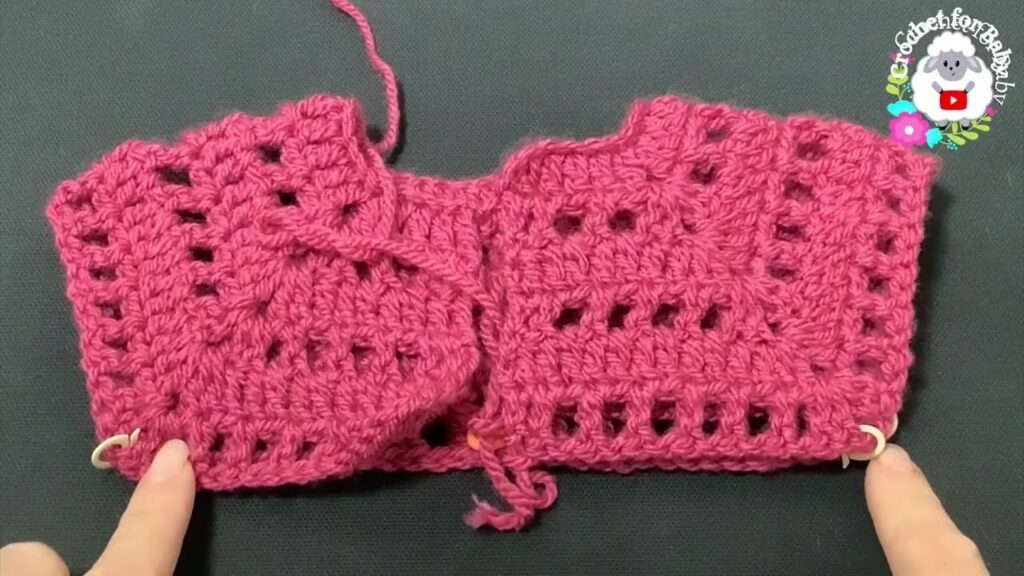
4. The Step-by-Step Construction
This project is typically worked in one piece, from the top down, which means no seaming!
Part 1: The Yoke
This is the top section of the cardigan that covers the chest and shoulders.
- Foundation Chain: You’ll start with a chain that is the length of the neckline, plus a few extra stitches for the button panel.
- Increase Rows: The pattern will instruct you on where to place your increases to create a flat, circular yoke. You will work in rows, turning at the end of each row. The increases will form the armholes and shape the top of the cardigan.
- Divide for Armholes: Once the yoke is the correct size, the pattern will instruct you to divide the stitches into four sections: two for the front panels, one for the back, and two armhole spaces. You will stop crocheting in the armhole stitches for the rest of the body.
Part 2: The Body
- Work in Rows: From this point on, you will work the body in one piece, continuing with the raspberry stitch pattern, but you will only work across the front and back panels. You will skip the armhole sections.
- Create the Body: Continue working in rows until the body reaches the desired length.
- Create the Ribbing: When the body is the correct length, you can add a simple ribbing (e.g., front post and back post double crochet) to the bottom hem for a professional finish.
Part 3: The Sleeves
- Work in the Round: Once the body is complete, you will join your yarn to one of the armhole openings. You can work the sleeves in the round or flat in rows. Working in the round is a great way to avoid seams!
- Continue Pattern: Continue working the raspberry stitch in rounds, decreasing a few stitches every few rows to create a tapered sleeve shape.
- Create the Cuff: When the sleeve reaches the desired length, you can add a simple ribbing cuff for a snug and finished look.
- Repeat: Repeat for the second armhole.
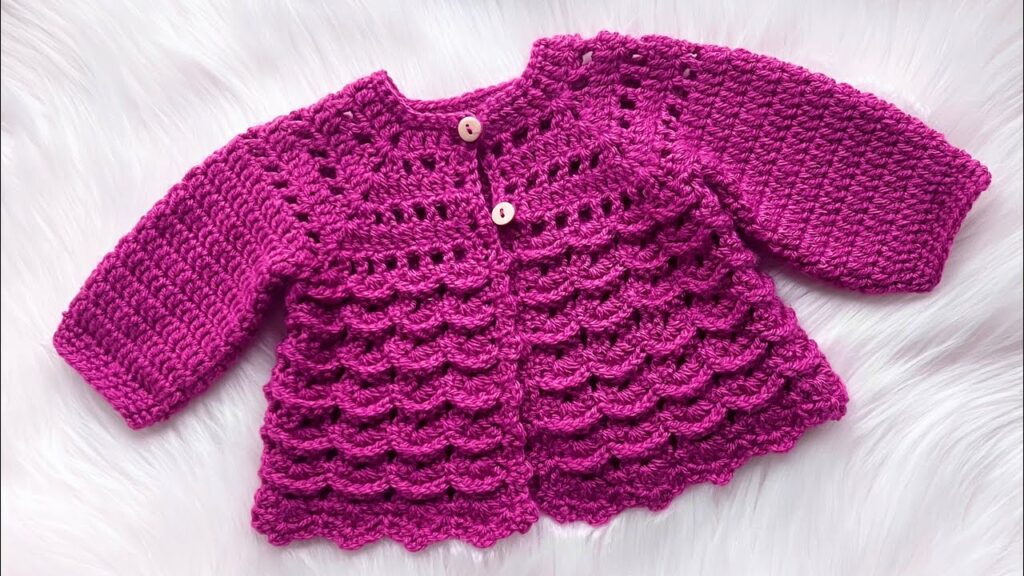
Part 4: Finishing Touches
- Button Panel & Buttonholes: A button panel is typically made by working a few rows of single crochet up one of the front panels. You will create the buttonholes by chaining one and skipping a stitch in a row, creating a small hole for the button to pass through.
- Weave in All Ends: Use your tapestry needle to carefully weave in every single loose end.
- Attach Buttons: Sew the buttons onto the opposite front panel.
- Blocking: Blocking is highly recommended. It will even out your stitches, help the fabric drape beautifully, and give the cardigan a perfect shape.
5. Final Thoughts
Crocheting a baby cardigan with the raspberry stitch is a delightful project that results in a gorgeous, one-of-a-kind garment. By breaking the process down into manageable parts and choosing a pattern that suits your skill level, you can create a treasured piece that is both beautiful and warm for a special little one.
Video part 2
